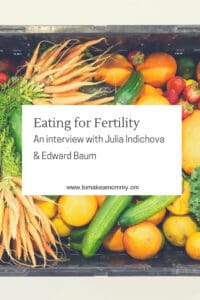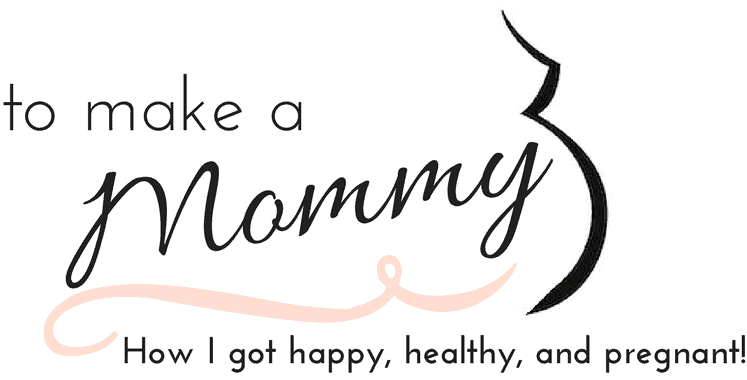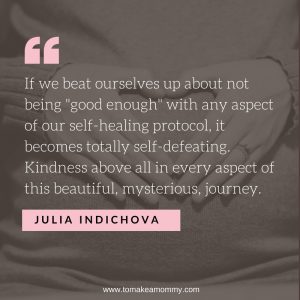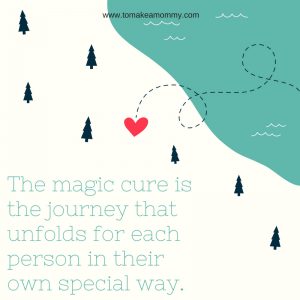 *This post contains affiliate links which at no cost to you provide me with some small change to help keep this blog running. If you decide to buy something I recommend, please consider clicking through one of my links to help support this blog and my family! Thank you!
*This post contains affiliate links which at no cost to you provide me with some small change to help keep this blog running. If you decide to buy something I recommend, please consider clicking through one of my links to help support this blog and my family! Thank you!
If you follow my blog religiously you’ll know I’m kind of obsessed with Julia Indichova (author of Inconceivable), her success story, and the Fertile Heart program. I paid for all her books on my own, and did her teleconference program to jumpstart my fertility mind-body work just a couple months before I conceived my first miracle. I know not everyone feels like Julia or her program are right for them, but I’m a total fangirl about it all.
So I was thrilled when I was offered the chance to interview Julia and her husband Edward on the occasion of his new book, “Cooking To Conceive the Inconceivable: One Chef’s Journey to Fertile Fatherhood.”
It’s his memoir of being a chef, a husband, a father, and weathering the “infertility” journey with Julia when they were trying to conceive their second. It is NOT a cookbook, although it does have a few simple recipes interwoven through the book.
Check out the interview below!
Anna: Edward, did you drastically change your nutritional habits like Julia did?
Edward: Hi Anna. At first I wasn’t planning to change my diet at all, but being the chef in the house and not wanting to make two different menus I joined in. It quickly became obvious to me that this “new” way of eating was good for me too. After a few months my chronic stomach problems went away. I became committed to walk the road with Julia, after all, this was our baby we were trying to conceive. With every new fertility food discovery I was energized to create a tasty dish.
Anna: After you had your miracle daughter did you both keep eating differently, or did you revert back to your old diet? In other words, has the approach to nutrition developed when Julia was trying to conceive stayed with you your whole lives?
Edward: It really wasn’t possible to go back. We felt so much better, more energized, we were going to keep going on making food choices that made us feel good. We also now had two children to feed, to give them the healthiest possible sustenance.
Anna: How is your book different than the other fertility diet recipes books that are already available?
Edward: My book is not really a fertility diet recipe book. Although there are recipes and passages about food prep, it’s my side of our story, what I went through emotionally when we first received the diagnosis. Food, including the recipes is part of that story, but I guess what makes it unique is how we lived that story. What I hope will also make the book helpful is that it’s told by me, the Dad. Dads rarely speak about their experience. There are also four other wonderful stories of people who conceived in different ways, some spontaneously, some with the help of technology. All of them are told by the Dad-to-be.
Anna: We know that Julia’s fertility diet was developed before many more modern studies on optimal diet for fertility. For example, new research shows that keeping total carbohydrates below 40% and keeping protein above 25% makes the healthiest, juiciest eggs. Would you change your diet or your recommendations based on new research? Would you consider more animal protein to boost total protein levels?
Julia: Nutrition is a comparatively young science. Anyone who has followed the research of the last couple of decades, has seen a number of conflicting studies about foods and fertility. Something that was dogma five years ago, is denounced today. Which is why we have a beautiful unique way of working with food in the Fertile Heart program. I had a lot of fun shooting The Ultimate Fertility Diet Video which is on our site. It’s a pretty accurate review of the whole idea of the fertility diet and it’s also a great introduction on how we work with food in the Fertile Heart Program. As for how I think I would approach food changes knowing what I know today? I would do the same thing today I did then: carefully listen to the cues my body was giving me about what it needed. It’s also how I’ve seen my clients beat some pretty dire prognosis. By allowing their bodies to guide them. In the Fertile Heart program, we follow some basic principles related to food, but there is no such thing as a Fertility Diet.
Anna: Julia, do you still survive on only fresh vegetable juice in the mornings?
Julia: Some days I have fresh vegetable juice and other days I have whatever it is I’m hungry for. Eggs, or a slice of banana with raw sprouted almond butter. I eat according to what I need at any particular time. In the Cleaning the Refrigerator chapter of Inconceivable, and in the Ally in the Cupboard chapter of The Fertile Female I talk about this in more detail.
Anna: Julia, do you still do fresh shots of wheatgrass? 😊
Julia: I occasionally have a shot of wheatgrass but no, I don’t drink it daily. Unfortunately people have misunderstood some parts of my story and turned wheatgrass into the “magic cure” for elevated FSH. Which of course it’s not. The magic cure is the journey that unfolds for each person in their own special way.
Anna: In your book, Julia, you talk about feeding the whole beautiful “holy human loaf” with nutritious food. How do you encourage women (and men) to focus on nutrition rather than elimination? Especially when some of what Julia did for her diet was elimination?
Julia: Yes, Anna, I love working with the idea of the Holy Human Loaf. And as I said, food is one of the tools of the Fertile Heart OVUM Practice. So when I speak about feeding our entire “Holy Human Loaf” I talk about feeding all aspects of that loaf. Making sure not only that we eat clean nourishing foods that respond to our particular nutritional needs, but that the ideas, thoughts, feelings, images we ingest are also supporting our fertility. It can start with food, but if that’s all we do, chances are we might end up pretty frustrated. I see that happening now with so many people, who come to my workshop and teleconferences after years on green juices and all sorts of restrictive diets, but what they’re doing is mechanical. They’re not really engaged with their own healing .I think it’s really important to be as loving with ourselves when working with food on this journey, as we would be with our babies. If we beat ourselves up about not being “good enough:” with any aspect of our self-healing protocol, it becomes totally self-defeating. So, I guess that’s a good note to end on: Kindness above all in every aspect of this beautiful mysterious journey! Thank you, Anna!
Want to get pregnant fast?
Love lists? Me too. Grab my 79 Things I did to transform my life and get pregnant in less than 3 months after 2 years of infertility and miscarriages! Totally free!
Anna Rapp is a fertility journalist and non-toxic living expert. When Anna Rapp was struggling with infertility and recurrent early miscarriage, she was diagnosed with diminished ovarian reserve, High FSH, low AMH, low follicle count, endometriosis, and an MTHFR mutation. Despite being told donor eggs were her only solution, Anna used her graduate training in research methods and analysis to read everything she could find on fertility and egg health. Ultimately, she lowered her FSH and got pregnant naturally (twice). She blogs about how she did it and encourages her readers to take charge of their fertility journey and get happy, healthy, and pregnant!




Leave a Reply